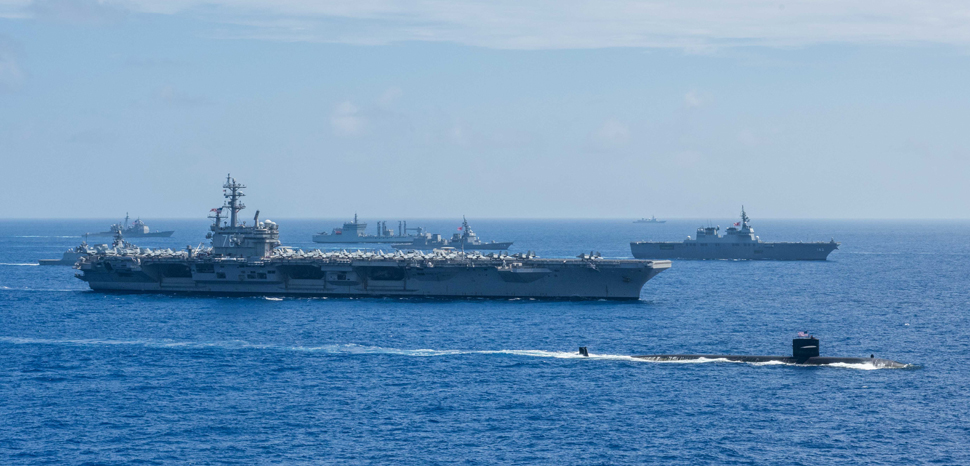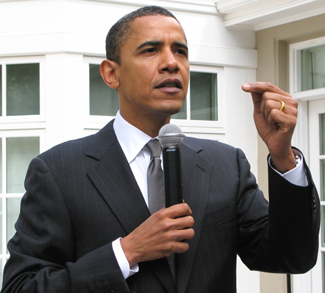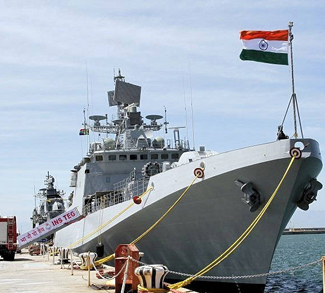Recent years have seen an increasing cooperation between India, Japan, and the US, especially in the maritime realm. One such occasion was the 22nd edition of the Malabar naval exercises, which concluded off the coast of Guam in June this year. These exercises came against the backdrop of the shifting sands of geopolitics in the wider Indo-Pacific region. Even as US President Donald Trump met the North Korean strongman Kim Jong-un in Singapore on June 12, at the same time, the US and China (the world’s two biggest economies) have been in an ongoing tariff-war.
This flux has also extended to the maritime domain. In a landmark move, the US Pacific Command has been renamed as the US Indo-Pacific Command. While India has been reaching out to Southeast Asia and East Asia through its “Act East Policy,” its maritime focus has been consistently growing. At the same time, Japan, under PM Abe, has launched its “Free and Open Indo-Pacific” strategy. The three countries already have a trilateral strategic dialogue which has been taking place among them since December 2011.
India’s Naval Doctrine of 2015 notes that the Indian Ocean accounts for “two-thirds of the world’s oil shipments, one-third of bulk cargo traffic, and half the world’s container shipments.” Hence, the Indian Navy’s role is crucial in this region. Besides, it is worth noting here that countries in the Indian Ocean region also face the danger of piracy and maritime terrorism. In the case of the horrendous Mumbai terrorist attacks of November 2008, the attackers came by the sea route.
Hence, it is no surprise that these three countries have come together in the Malabar naval exercises, which actually started out as bilateral exercises between India and the US back in 1992. Japan became a permanent member of these exercises only in 2015.
In this year’s edition of the Malabar exercises, the Indian Navy was represented by “two indigenously designed and built ships, the multi-purpose stealth frigate INS Sahyadri and Anti-Submarine Warfare corvette, INS Kamorta, Fleet Tanker INS Shakti and Long Range Maritime Patrol Aircraft P8I.” However, this year, India’s aircraft carrier INS Vikramaditya was not a part of the exercises as it is undergoing a pre-scheduled refit.
The JMSDF sent a Hyuga-class helicopter carrier JS Ise with integral helicopters, the Takanami-class destroyer JS Suzunami, Akizuki class destroyer JS Fuyuzuki, two P1 Maritime Patrol Aircraft besides a submarine. The US Navy was represented by the Nimitz-class aircraft carrier, USS Ronald Reagan with its air wing, two Ticonderoga class cruisers, two Arleigh Burke class destroyers, a Los Angeles-class attack submarine, and one Long Range Maritime Patrol Aircraft P8A. The exercises were conducted in two phases: the harbour phase from June 7-10, and the sea phase from June 11-16.
A US Navy Press Release about these exercises noted that “Indian, Japanese, and US maritime forces have a common understanding and knowledge of a shared working environment at sea. Each iteration of this exercise helps to advance the level of understanding between the nations’ sailors as members of Indo-Pacific nations, and the hope is to be able to continue this process over time to strengthen bonds and personal relationships.”
Why Malabar 2018 Matters
These exercises were important for a host of reasons.
For one, the Indo-Pacific has acquired an increasing relevance under the Trump Administration in the US, the Modi administration in India, and the Abe administration in Japan. Malabar 2018 was held against the backdrop of the Indian PM Narendra Modi’s visit to Wuhan in China for an informal summit with the Chinese president and his keynote speech at the Shangri-La Dialogue in Singapore, where he noted that “oceans had an important place in Indian thinking since pre-Vedic times. Thousands of years ago, the Indus Valley Civilisation as well as Indian peninsula had maritime trade.”
Very early on in his term (in March 2015), during a visit to Mauritius, Seychelles, and Sri Lanka, PM Modi noted that “we seek a future for Indian Ocean that lives up to the name of SAGAR — Security and Growth for All in the Region.” New Delhi is also worried about China’s so-called “string of pearls” strategy which has seen Beijing helping build ports and port-related infrastructure in Gwadar (Pakistan), Hambantota (Sri Lanka), Kyaukpyu (Myanmar) and Chittagong (Bangladesh).
Second, the US has also advocated a stronger line on China during the recently-concluded Shangri-La Dialogue and had disinvited the Chinese Navy from the RIMPAC exercises. Secretary Mattis had noted at the Shangri-La Dialogue that “ as initial response to China’s continued militarization of the South China Sea, last week we disinvited the People’s Liberation Army Navy from the 2018 Rim of the Pacific Exercise, as China’s behavior is inconsistent with the principals and the purposes of the RIMPAC exercise, the world’s largest naval exercise”
Third, Tokyo, as part of its “Free and Open Indo-Pacific Strategy” would not want itself to be boxed in by China given that it is depends on free and open sea-lanes of communication in the wider Indo-Pacific region for both its energy imports and also for its exports. In addition, Beijing claims the Japanese-controlled Senkaku islands (known as Diaoyu in China.)
Fourth, India’s relations with both the US and Japan have been improving steadily. New Delhi has signed the LEMOA (Logistics Exchange Memorandum of Agreement) with the US which allows the US and India to use designated bases in each others’ countries for refueling and replenishment. In addition, Japan and India have been holding joint naval exercises known as the JIMEX since 2012, which is a far cry from the times when the two countries would conduct joint exercises only at the coast guard level. India is now buying a wide-range of weapons from the US as opposed to the earlier times when the former Soviet Union (and its successor state Russia) used to be almost the only supplier of weapons to India. It is noteworthy that arms imports by India from the US rose by a staggering 550% during 2013-2017 as opposed to the previous five years.
Fifth, the Malabar exercises build on the growing cooperation between these countries (and Australia) in the maritime arena, which first took effect after the disastrous Indian Ocean tsunami of December 2004. In addition, India has also recently decided to base fighter jets in the strategically important Andaman and Nicobar Islands, giving it an even greater reach in the wider Indian Ocean region. New Delhi is also looking to develop the Sabang port in Indonesia, which lies very close to India’s Andaman and Nicobar group of islands. New Delhi is also building its first home-grown aircraft carrier, which is expected to be ready by late 2020.
US-India-Japan Relations: Churning Ahead
While it is clear that India, Japan, and the US are testing the waters and looking to forge a closer maritime partnership, they have also been averse to taking on China head-on. This is reflected in the exclusion of Australia from the Malabar exercises, in spite of its stated position to join. At the same time, these three countries have reasons to be worried about China’s growing power projection capabilities in the Indian Ocean region. The scant respect Beijing has paid to international rules of conduct in its dealings with countries like the Philippines have also prompted other countries in the Indo-Pacific to reassess their capabilities vis-à-vis China.
The Malabar exercises will continue to rise in importance in the near future. These exercises afforded the three nations the opportunity to test the collaboration between their personnel and the interoperability of their military platforms. Japanese PM Shinzo Abe way back in August 2007 (during his earlier term in office) in his landmark speech before the Indian Parliament titled “Confluence of the Two Seas” had been very prescient in noting that “the Pacific and the Indian Oceans are now bringing about a dynamic coupling as seas of freedom and of prosperity.” His words are now ringing true on the high seas of the Indo-Pacific region.
The opinions, beliefs, and viewpoints expressed by the authors are theirs alone and don’t reflect the official position of Geopoliticalmonitor.com or any other institution.




